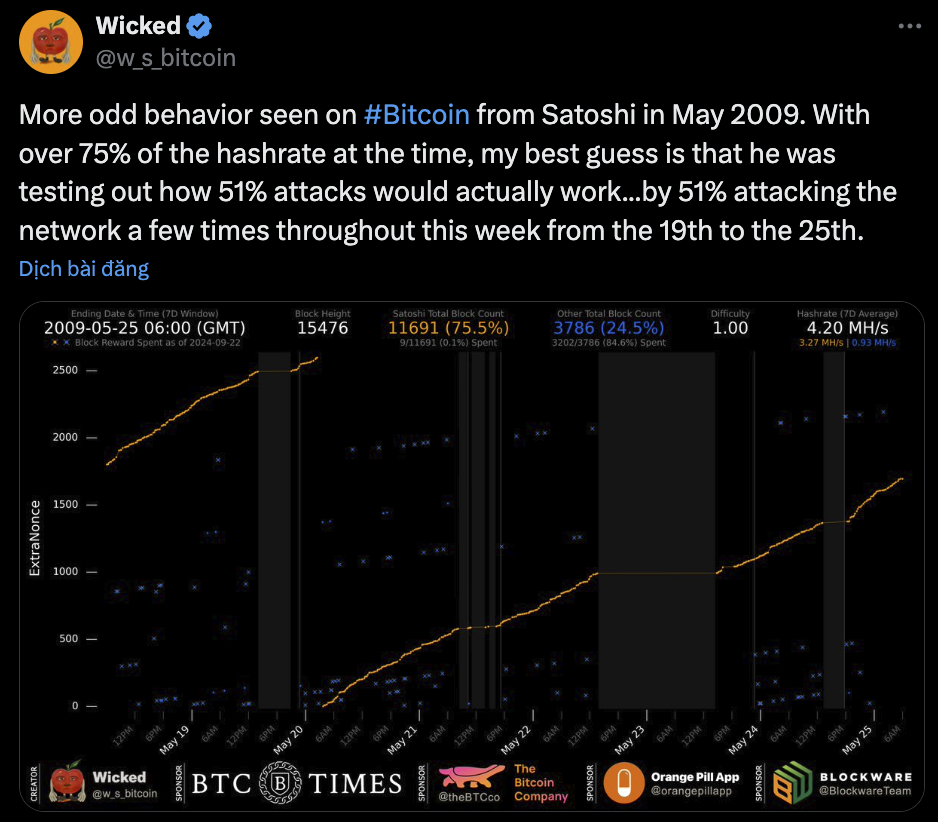The cryptocurrency community is reacting to the news of an upcoming HBO documentary that claims to have exposed the identity of Bitcoin’s mysterious creator, Satoshi Nakamoto . On October 3, HBO released a trailer for the film, which features interviews and research with Bitcoin pioneers, but does not claim to have solved “the Internet’s greatest mystery.”
A report from Politico suggested that the film had identified Satoshi and could link him to criminal activities. Although the film has not yet aired, the information has sparked much debate in the industry. Major candidates for Satoshi's identity, such as Len Sassaman, Hal Finney, and Adam Back, have been mentioned, but Back has previously stated that he is not the founder of Bitcoin.
Alex Thorn from Galaxy Digital commented that identifying Sassaman as Satoshi may not have a negative impact on the market, given that he passed away in 2011. Meanwhile, Mert Mumtaz, CEO of Helius Labs, criticized the Politico report for its portrayal of Bitcoin's connection to crime, arguing that this is unfair to Bitcoin.
As the documentary's release date nears, curiosity surrounding the true identity of Satoshi Nakamoto continues to grow, along with skepticism about the authenticity of the claims made in the film.
In another notable development, a social media post from an X account named “Wicked” made the claim that Satoshi Nakamoto may have performed 51% Attack on the Bitcoin blockchain back in May 2009. Wicked speculates that Satoshi may have tested these attacks early on to better understand their potential impact on the network.
“Satoshi’s other strange behavior was discovered on Bitcoin in May 2009. With over 75% of the hashrate at that time, I guess he was testing how 51% Attack actually work… by 51% attacking the network a few times this week from the 19th to the 25th.”

Source: X
The post also included a chart showing the ExtraNonce data in the coinbase transaction for each Block. Wicked points out that at the time, most participants used ExtraNonce in one way, while Satoshi used a different method. As a result, the Block mined by Satoshi, highlighted in orange, stand out.
Wicked suggests that this action could have been intentional or unintentional, with Satoshi likely unaware of it. The X account also notes that there were no emails from Satoshi or other early adopters mentioning any restructuring that week. However, Wicked confidently states:
“I'm pretty sure that's what we're seeing.”
Jameson Lopp, a cypherpunk and co-founder of self-custodial digital asset solution Casa, noted that ExtraNonce's silence during these periods was unusual, suggesting that the mining software was still running without issues. However, he also noted that this could imply that no additional Block were mined during that time. Lopp suggested that one possible reason could be that Satoshi had manually adjusted the clock on his machine. Lopp also speculated that a loss of internet connectivity could have caused the software to freeze, as it would pause if there were no available partners.
The lack of data and uncertainty surrounding the 2009-2010 development period has left little to the imagination as to what Wicked’s findings actually mean. Recent discussions surrounding Satoshi Nakamoto’s potential involvement in 51% Attack have highlighted the fascination with Bitcoin’s early development and the mysteries that remain. While many theories have been put forward, these speculations still underscore the complexity of blockchain technology, while the actions of Bitcoin’s founder continue to spark debate in the cryptocurrency community, leaving more questions than answers.
Join Telegram: https://t.me/tapchibitcoinvn
Follow Twitter (X): https://twitter.com/tapchibtc_io
Follow Tiktok: https://www.tiktok.com/@tapchibitcoin
Itadori
Bitcoin Magazine







